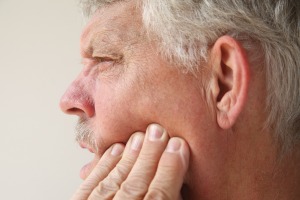Health Blog: Solutions & Wellness Tips
Temporomandibular disorder treated with therapy

More evidence needed to confirm benefits of combined treatment
Temporomandibular disorder (TMD) is a collective term used to describe any problems with the temporomandibular joint, which connects the lower jaw to the skull, and usually involves pain and the inability to fully open the mouth. Numerous treatments are available for TMD, but home physical therapy (HPT) and manual therapy (MT) are supported by sufficient literature as effective ways to provide relief and reduce pain. Due to their effectiveness, it is believed that combining these two programs could be even more effective for treating TMD, but no studies have yet confirmed this. For this reason, a recent study was conducted that compared combined HPT and MT with HPT alone to determine if there were any added benefits.
A small group of patients were randomly assigned to one of two groups
Patients diagnosed with TMD were invited to participate, and 40 individuals responded and were then randomly divided into either the HPT-only group or the HPT+MT group. The HPT program included patient education, breathing exercises, relaxation techniques and a number of jaw exercises designed to stretch the mouth. The combined group performed everything in the HPT program, plus the MT program, which consisted of treatments administered by a physical therapist, including jaw mobilization, stabilization, more exercises, and relaxation and stretching techniques. Both programs lasted four weeks and all participants were assessed for pain and pain-free maximum mouth opening (MMO) before and after interventions.
Combined treatment program is significantly more effective
After the intervention, both groups showed improvements in pain and MMO scores, but the combined HPT-MT group reported scores that were significantly higher than the HPT group. This means the combined intervention was more clinically effective than HPT alone for improving conditions in TMD patients. The combined approach was likely to be more beneficial because having a hands-on physical therapist can manually improve joint mobility. They also provide extra motivation and help guide patients to perform exercises correctly while monitoring their symptoms to ensure they are not overstraining. Based on these findings, it seems that a combination of HPT and MT can be an extremely effective way to treat TMD, and physical therapy should therefore be considered a reliable options for patients who experience this condition.
-As reported in the July '13 edition of the Journal of Bodywork and Movement Therapies
December 3, 2014
Back to Health BlogRECENT POSTS
- Stretching Could Be A Game-Changer for Chronic Pain Relief
- Easing the Burden of Tension Headaches With Physical Therapy
- Got Heel Pain? New Study Reveals How to Outsmart Plantar Fasciitis
- How Physical Therapy Can Tame Whiplash-Related Symptoms
- Exercise Therapy May Provide Relief for Chemotherapy-Related Issues
- Unlocking Relief From Elbow Pain With Hands-On Therapy and Exercise
- Are Deep Squats Really as Bad as We Think?
- Reclaiming Your Grip: The Power of Hands-On Therapy for Tennis Elbow
- Runners Can Overcome a Common Knee Condition With Physical Therapy
- How Physical Therapy Can Help Older Adults Stay on Their Feet
